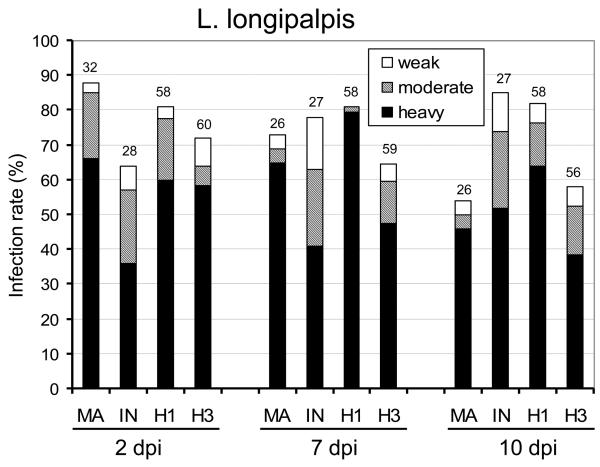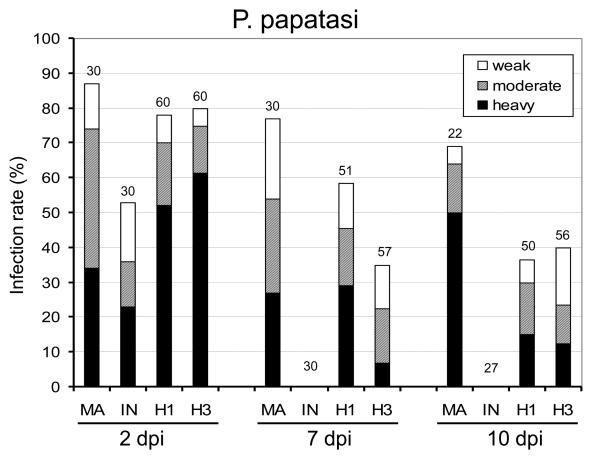Fig. 1.
Development of Leishmania hybrids in Lutzomyia longipalpis and Phlebotomus papatasi. Infection rates and density of Leishmania major (MA), Leishmania infantum (IN), hybrid LEM4891 (H1) and hybrid LEM4833 (H3) in sand fly midgut on days 2, 7 and 10 p.i. Infections were classified into three categories: heavy (more than 1,000 promastigotes per gut) - black bars, moderate (100-1,000) - grey bars, light (1-100) - white bars. Numbers above the bars indicate the number of dissected females. A) Development in L. longipalpis: the infection rate and the intensity of infection did not differ between Leishmania strains studied. B) Development in P. papatasi: on days 7 and 10 p.i., the infection rate and the intensity of infection significantly differed between L. major, hybrids and L. infantum.


